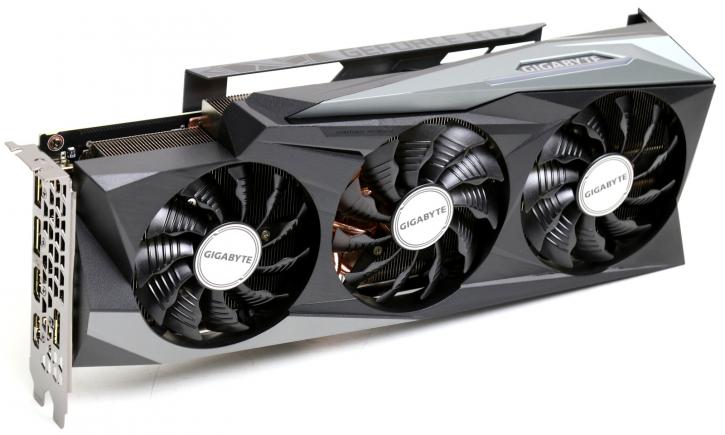Introduction
Gigabyte GeForce RTX 3080 Ti Gaming OC review
In this review, we test the Gigabyte GeForce RTX 3080 Ti Gaming OC. The card is tweaked a small notch and has been designed with a custom PCB and that traditional WindForce cooler. Gigabyte as well offers a dual BIOS mode for silent and performance cooling, yet with the very same performance.
Yeah, there's no denying it. It has been a bizarre year if we're talking computer components alone, silicon shortages, mining it's been sour grapes for a long time now. Likely that won't even change soon. People are almost fighting to be able to grab a decently proceed graphics card, often running up to three times the MSRP pricing. NVIDIA is staying on its trajectory though, implementing hash-rate limitations for consumer-grade GPUs and releasing refresh products pretty much as scheduled. Today we see such a refresh product, a product that positioned itself in-between the GeForce RTX 3080 and 3090. That product would be the GeForce RTX 3080 ti, and probably was the worst kept secret as of late in the history of NVIDIA. Armed with a shader core count of 10240 units, this card is paired with 12 GB of GDDR6X graphics memory running 19 Gbps. Much has been said, rumored, and spoken about this card, as with that libidinous shading core count, it is bound to be a bit of a beast in the enthusiast performance segment. You need to remember that it was less than a year ago that NVIDIA launched their Ampere GPU series, September 2020 in fact. A week before announcements, specifications of the GeForce RTX 3060 Ti, 3070, 3080, and 3090 took a twist; the shader core count mysteriously doubled up from what everybody expected, to date something massively important to this product range as yes, the competition has gotten fiercer as well. NVIDIA's GPUs are fabricated on an 8nm node derived from Samsung. This process further develops Samsung's 10nm process; no EUV is applied in production just yet. This second wave of announcements will see the GeForce RTX 3080 Ti and next week 3070 Ti (hey come on it's not a secret). The desktop product line of Ampere for consumers now entails the GeForce RTX 3060 Ti 8GB, 3070 8GB GDDR6, RTX 3080 10GB, RTX 3080 Ti 12GB, and RTX 3090, what we test today is a 12GB GDDR6X based close to premium flagship. Much like the 3080 and 3090, the 3080 Ti will base based on the existing 28 billion transistors based GA102 GPU from NVIDIA, obviously reconfigured. The card has an impressive 10240 Shader processors activated and mind you, the 3090 has 10496. A big change is that the memory is halved from 24 towards 12 GB (which is an excellent number).
RTX 3080 Ti Gaming OC
in this review, we'll focus on the Gigabyte, they once again offer a Gaming OC model, in particular this one has been fitted with two BIOS modes, both offering the same rendering performance, however there's a silent and performance mode (we advise silent btw). The card comes factory tweaked at 1710 MHz (boost) out of the box. That’s a mild bump seen from the reference 1665 MHz boost. The Gaming OC model also features a TDP of 360W, which is 10W over reference specs. Gigabyte equipped the card with a semi-passive design; the three fans part of the windforce ecosystem start to spin and cool once the GPU warms up. The card is beefed up pretty extreme. As explained, it has a dual BIOS with perf and silent mode. Make no mistake; both modes offer the same performance, just a marginal difference in temperatures and acoustics can be perceived. As mentioned this card has a clock speed of 1710 MHz out of the box. The memory runs stock at 19 Gbps effective. The output interface is DisplayPort 1.4ax3, HDMI 2.1 x 2. The bus interface is PCI-Express4.0 (x16), the auxiliary power connector is 8pin x2, and the card size is L=320 W=129 mm H=55 (2.7 slot). Gigabyte also will offer you a nice 4 Years Warranty (Online registration required).


